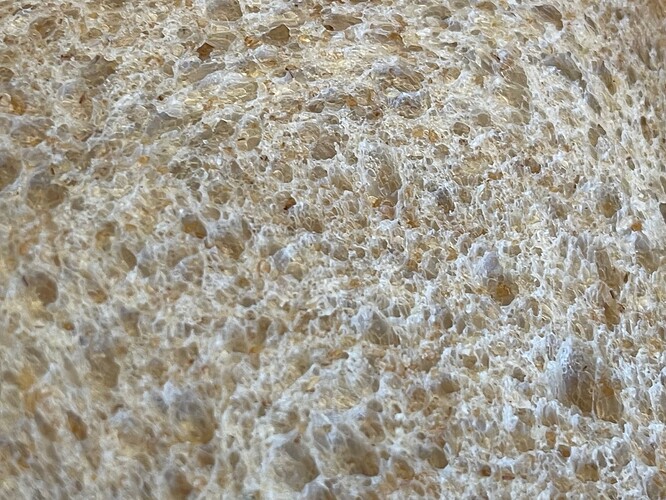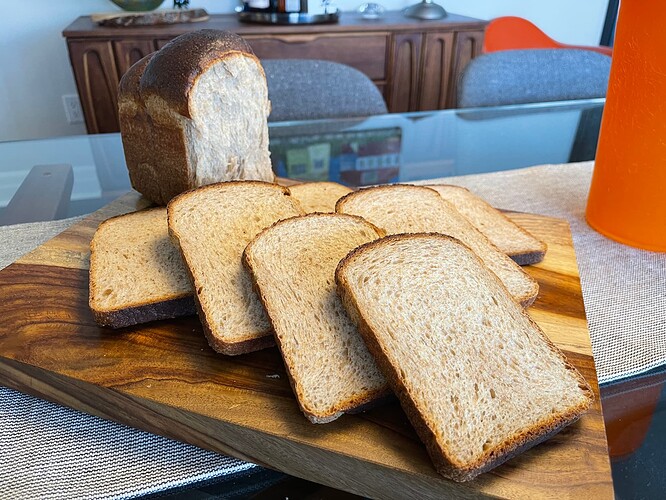Slowly working my way up in the percent whole wheat in my Hokkaido sourdough milk breads. 75% is the highest so far and I think it was quite successful. I’m not sure how much higher I can go and still get the result that I’d like. I did change things this time to add an autolyse because a majority of the flour is stoneground whole wheat.
For one loaf 9x4x4” Pullman pan
Ingredients
Sweet Stiff Starter
• 53g bread flour
• 24g water
• 18g light brown sugar
• 18g sourdough starter ~100% hydration
1:1.33:2.9:1 starter:water:flour:sugar
Tangzhong classic 1:5 ratio
• 89g milk (adjusted down to 1:5 ratio from original)
• 18g Whole Wheat flour
Dough Dry Ingredients
• 55 bread flour
· 305 g whole wheat
• 54g sugar 12.5%
• 7g salt 1.6%
Dough Wet Ingredients
• 169g milk 36.8%
• 50g egg beaten (about 1 lg egg)
• 60g butter 13.9% softened but do not melt, unless you are mixing with the mixer then melt. Combine with 30 g of flour to make easier to add to dough if hand mixing.
Pre-bake Wash
• 1 egg beaten
• 1 Tbsp milk
Instructions
Starter
Mix the starter ingredients in a jar or pyrex container with space for at least 50% growth. (See gallery where 150ml grows to approximately 225ml.)
Press down with your knuckles to create a uniform surface and to push out air.
At room temperature, it typically takes 7-9 hours for this sweet stiff levain to be at peak.
Tangzhong
In a sauce pan set on med-low heat, whisk the milk and flour until blended. Then cook for several minutes until thickened, stirring regularly with a spoon or heat-resistant spatula. Let cool in the pan or, for faster results, in a new bowl.
For my first bake, in the morning mixed the wet ingredients including the tangzhong with all the whole wheat flour to allow the bran to hydrate for 1.5 hours. Added levain next and mixed to incorporate.
Next added sugar, salt and bread flour and mixed to incorporate, rest 10 mins. Mixed until very good gluten development and windowpane.
Transfer the dough to a lightly oiled bowl, form it into a ball, flip it smooth side up, cover and let rise for 6-12 hours depending on room temperature. Bulk lasted 5 hours at 82ºF. You can place the dough into the fridge to chill the dough for about 1.5 hours, this makes rolling the dough easier. I didn’t do that this time.
Prepare your pans by greasing them or line with parchment paper.
Scrape the dough out onto a clean counter top. Lightly flour the bench. Press the dough into a rectangle and divide it into four. Shape each tightly into a boule, allow to rest 5 mins. Using a rolling pin roll each ball out and then letterfold. Turn 90* and using a rolling pin roll each out to at least 8”. Roll each into a tight roll with some tension. Arrange the rolls of dough inside your lined pan alternating the direction of the swirls. This should allow a greater rise during proof and in the oven.
Cover and let proof for 4-6 hours (more if you put the dough in the refrigerator). I proof until the top of the dough comes to within 1 cm of the top edge of the pan.
Preheat the oven to 350F and brush the dough with the egg-milk wash.
Bake the loaves for 50-55 minutes or until the internal temperature is at least 190F. Shield your loaf if it gets brown early in the baking process. After 50 mins remove the bread from the pan and bake a further 10 mins by placing the loaf directly in the oven on the rack with the oven turned down to 325ºF. You can brush the top of the loaf with butter if you wish at this point while the bread is still hot.
I’m quite pleased with the oven spring this dough was able to achieve with this much whole wheat. I think going higher than 75% I’ll probably need to add some vital wheat gluten in order to attain a shreddable crumb which is a characteristic of this style of bread.
Alternate direction of the swirls for greater rise.
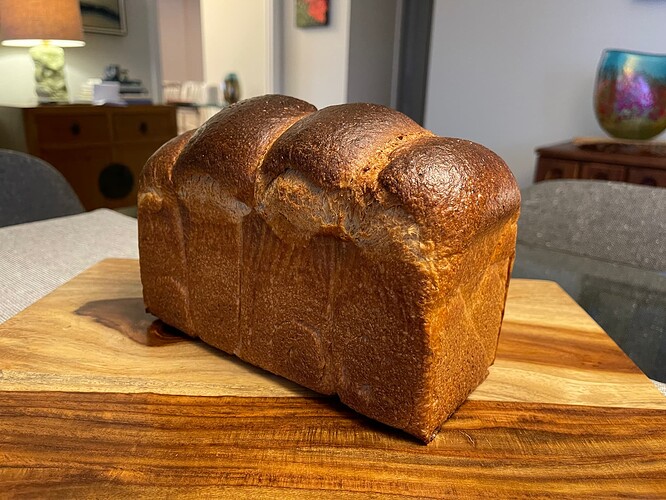
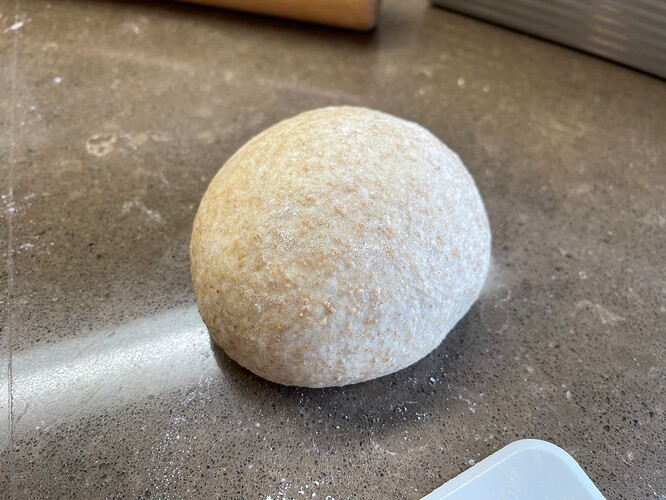
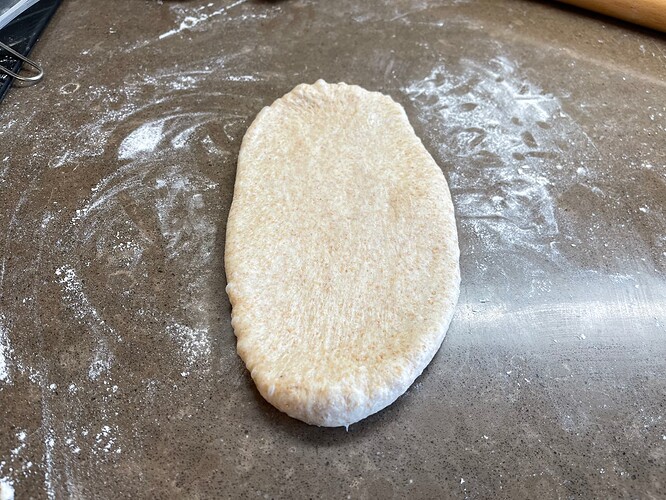
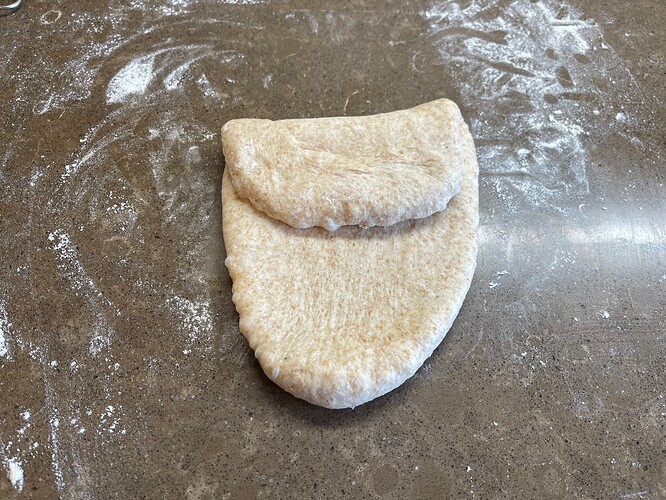
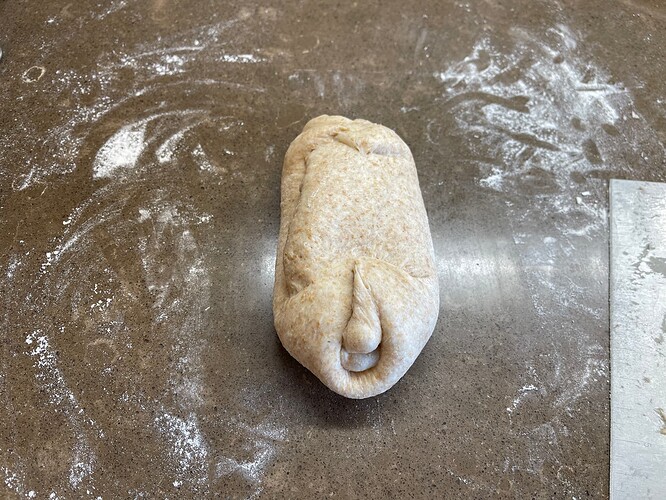


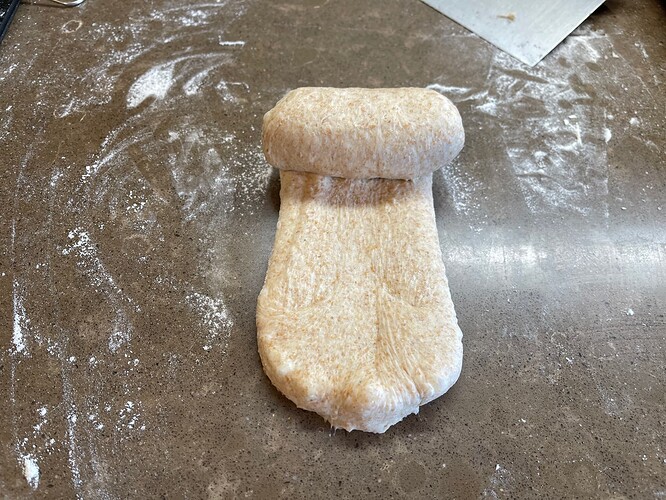
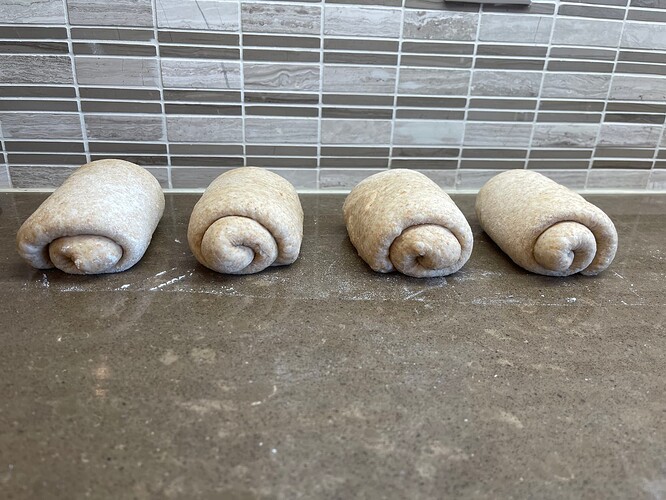


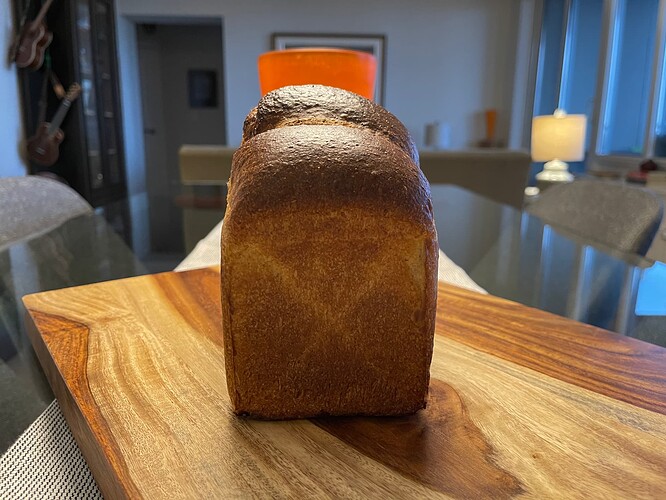
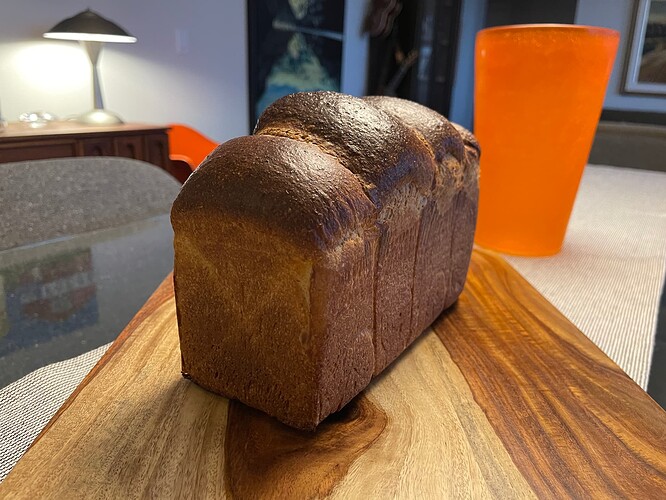


 it is OK.
it is OK.
